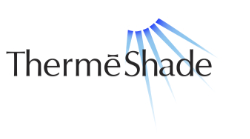Product Information
TS 700
75% more visible light transmittance
than other shades with the same insulation value
~Lawrence Berkeley National Laboratories
Complex Glazing Database
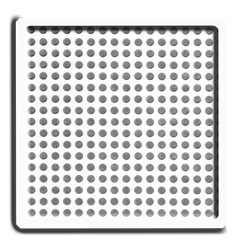
People Have Asked…
ThermēShade reflects electromagnetic waves from the sun in the ‘infrared spectrum’ which we cannot see. Other shades focus on electromagnetic waves in the ‘visible light’ spectrum by shading or blocking the light. Because we deal with a different heat-causing energy, we can let in LOTS of healthy, daylight while retaining great visibility.
More than half of the total energy from the sun arrives as infrared. It zooms through space but carries no heat until it hits a solid object here on earth. Clear glass windows minimally slow these waves, so when they stop at the floor, furniture or your skin, they heat up those objects. The sooner you block this incoming energy (right next to the glass), less heat is created inside a building.
Astronauts need protection from the intense infrared energy in the vacuum of space. To solve this problem, NASA developed metalized space suits to protect against extreme temperatures of 249º F to -245º F., by reflecting radiation and insulating body temperatures for comfort. Our technology is directly based on this need to reflect and insulate both kinds of heat energy.
Like the newer space suits, we have eliminated the shine because our material is not silver, but white and gray, and absorbs and emits a nominal 11% of heat energy. This can be major factor because items such as shades, curtains, and dark glass tinting actually absorb and radiate heat into a building, leading to an internal temperature imbalance.
The Department of Energy selected a group of smart scientists at Lawrence Berkeley National Laboratory to optically test all the shading products and record them in a database. Energy modelers and architects can access this database to calculate the efficiency of a shade when paired with the building’s window system. ThermēShade is in this database.
We can go back to the space suit analogy. The suits retained body heat when temperatures were -245º F. The thermal energy one creates in a home or building (through heating, cooking, electronic devices), is also retained by our ThermeShades before escaping through the windows. Studies done during sub-zero Canadian winters show hotel rooms were able to save 50+% on heating costs.
This specialized material is about the thickness of two pieces of paper. Each of its layers has a different function to regulate heat exchange at the window glass. The final outside white layer goes next to the window glass for solar heat rejection, while the light grey layer faces the room for thermal control.
Our material, if solid, would be highly effective but reduce visibility. Instead, we have perforated the material with small holes, a design that increases visual acuity while retaining its reflective and insulating properties. It helps your eyes focus by shielding your vision from the direct rays of light. When you reduce those direct rays, annoying glare is minimized. Your eyes can relax and see better with colors intensified.
Want to know more?
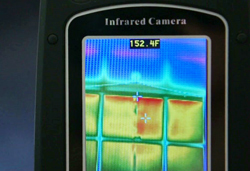 |
Heat Control / ReflectivityNon-visible, radiant energy travels from the sun, converting to heat as it contacts solid objects. Window glass has a limited capacity to slow this energy. ThermēShades unique construction rejects between 68%-85% of this energy throughout the day depending on the angle of the sun. During the summer, the unwanted heating energy is slowed immediately by the interior shade once it has passed through the glass. Building furniture absorbs less of the heat producing energy and remains cooler. During the winter, any kind of thermal heating that is produced to keep the interior warm, is also slowed at the glass before it has a chance to escape. Cold drafts can be eliminated by blocking unrestricted movement of heat through windows, making every room in the house or office more comfortable. The significant amount of reflectivity comes from ‘superinsulation’ technology designed for extreme temperatures. Space suits and other items were developed as protection from hazardous amounts of radiant energy found in space. Absorption of heat is another important factor in any window product. If the incoming summer heat, hits a blind or drawn curtain it is absorbed. That heat radiates into the room you are trying to cool. TS 700 screen absorbs just 11% of the incoming radiant energy, a very small percentage compared to any other product. Heat is not allowed to accumulate. |
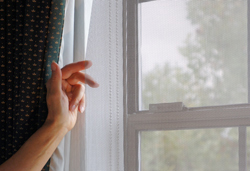 |
VisibilityAlong with the high degree of reflectivity, our perforated window products allow for a large percentage of ‘visible light transmission.’ At 34% openness it is one of the few with such a large openness/efficiency ratio. For example, similarly effective shading materials have 10% openness, obstructing both the view and daylight. Glare ReductionReduction of glare can be measured using sophisticated optical equipment and is crucial to internal comfort in both residential and commercial settings. At each installation, clients comment on the noticeable relief from harsh, incoming light. Computer screens and AV equipment benefit greatly from reduced reflection. |
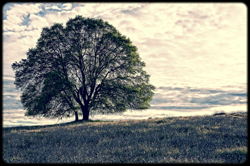 |
Daylighting / Health / UVEquating the introduction of natural light in buildings to actual health benefits has produced thousands of studies, each pointing to a variety of positive effects. Some of the more interesting recent findings have been:
The sun’s Ultra-Violet rays can be very destructive to most any surface. ThermēShade has been shown to reduce UV transmission by 68%. This combined with some of the selective coatings in most glass, will effectively reduce fading of carpets and furniture. Increased heat gain through solar exposure has the potential to accelerate off-gassing from interior furnishings composed of synthetic materials. When heat gain is slowed at the window glass, objects in the room remain at a more constant temperature, minimizing the release of unwanted chemicals into the environment. |
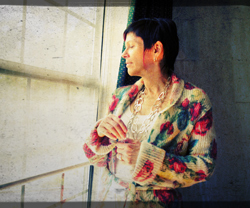 |
Aesthetics / Durability / PrivacyVideos on this site will give you some idea of the unbelievable clarity of the material. In video we track the visual effects from morning, through evening and night, moving outside for an interior view. The exterior of the material is a crisp white which blocks the radiant energy while absorbing very little of the incoming heat. The interior facing color is a neutral grey specially tinted to blend in with most interiors. Both sides are coated with a durable, washable, matt finish. A damp microfiber or cloth should be all that’s needed for any mishaps. The material itself is just .009 of an inch, very light and flexible. Because of the material’s unique core, it has high tensile strength and will not fade, shrink or tear. During daylight hours the appearance from the outside will be opaque. This adds a high degree of privacy for both offices and homes. The clean white backdrop may also be used to enhance or promote the visibility of signage or advertising in commercial applications. |
 |
Balance / Comfort / UseAlthough hard to quantify, comfortable is how we would like to feel in our indoor environment. By controlling large temperature swings occurring throughout the day, any and all of your office or home can be a usable space. Prior to ThermēShade installations, office workers would move away from the hot glare of their windows, close the blinds or argue over thermostat settings while their co-workers were freezing across the room. After ThermēShade, everyone now sits comfortably in a light filled space. Homeowners report that they don’t have to close off rooms or areas that used to be drafty. The whole house acts as one unit. When you reduce the transfer of heat in and out of windows, the whole space becomes balanced. Balanced spaces are more efficient to heat and cool, leading to large savings in energy costs. There have been questions about how and when to use the ThermēShade window material. Since the material is hardly noticeable, let’s in light and controls heat gain and loss day/night, winter and summer, the answer is ‘all the time’. During cold winter days you might be tempted to roll the shades up or push them aside for that passive solar heat gain but are you loosing more heat through that window than you are gaining? |
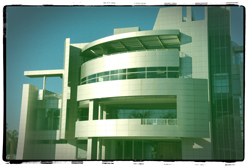 |
Green Building / LEED creditsBecause of the flexible nature of the ThermēShade window product and wide variety of applications available, bi-seasonal energy efficiency and day-lighting goals can be attained. With 32% of natural light available and 68% of radiant heat energy rejected, interior spaces become pleasant working environments. Less heat is absorbed by furniture and carpets, reduces the potential for harmful VOC off-gassing. With such drastic potential for energy savings, expensive upgrades to larger HVAC units can be re-assessed and the lifetime of existing units extended. Installing ThermēShade before calculating for a new or expanded solar panel system may lead to a reduced KW project. Both new construction and retrofit projects will benefit. |
 |
Energy SavingsHistorically energy saving benefits from window coverings/attachments has been illusive. The U.S. Department of Energy (DOE) has identified window attachments ‘as having significant potential to cost effectively reduce energy consumption in the residential and commercial building sectors’. AERC (Attachment Energy Rating Council) was created with funding from the DOE to create a rating, labeling and certification program that will provide credible and accurate information about energy performance. Window covering manufactures submit their products to Lawrence Berkeley National Laboratory Windows and Daylighting group for evaluation and listing in a comprehensive database. Materials in the database can then be used for modeling in different building environments. |
